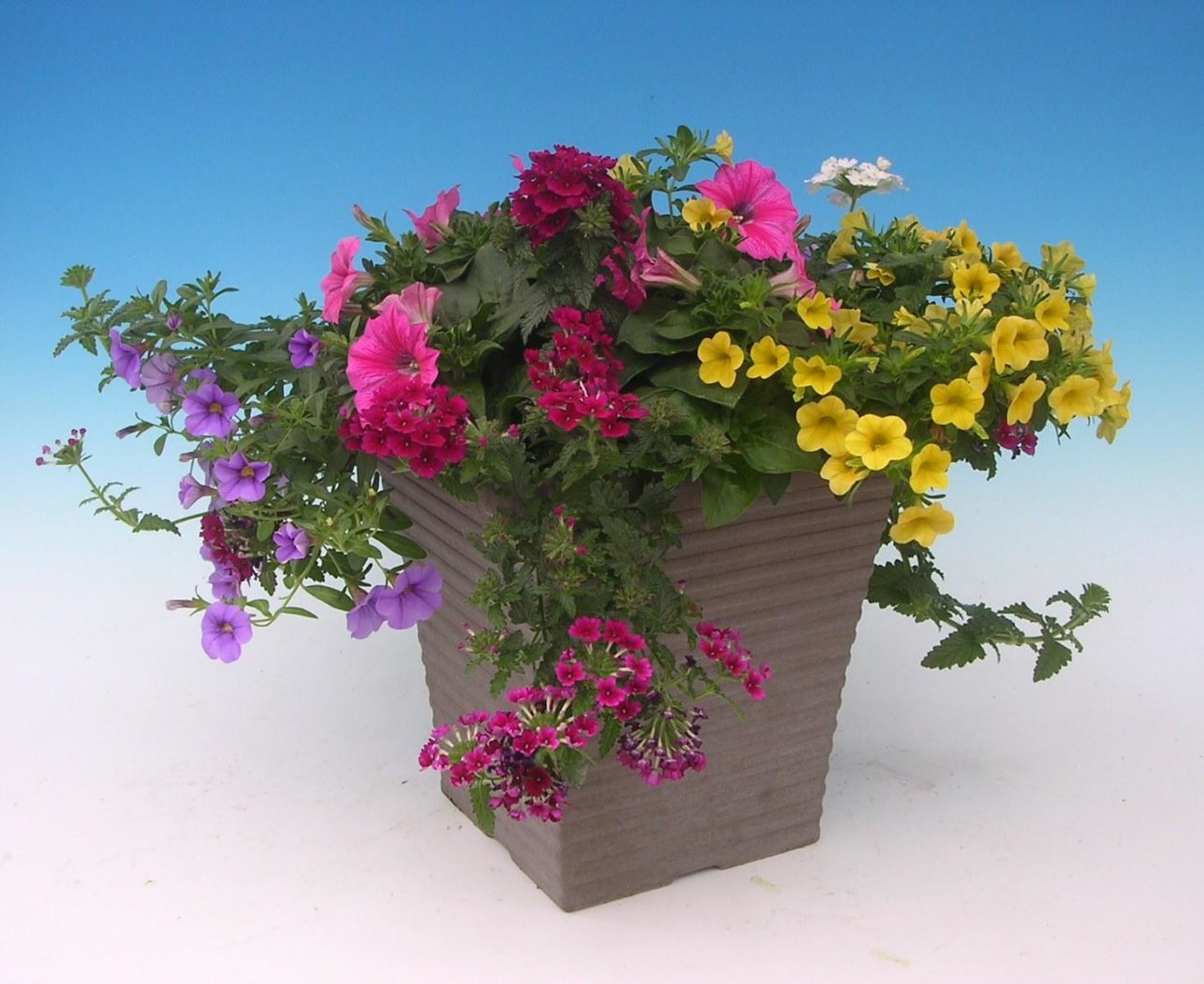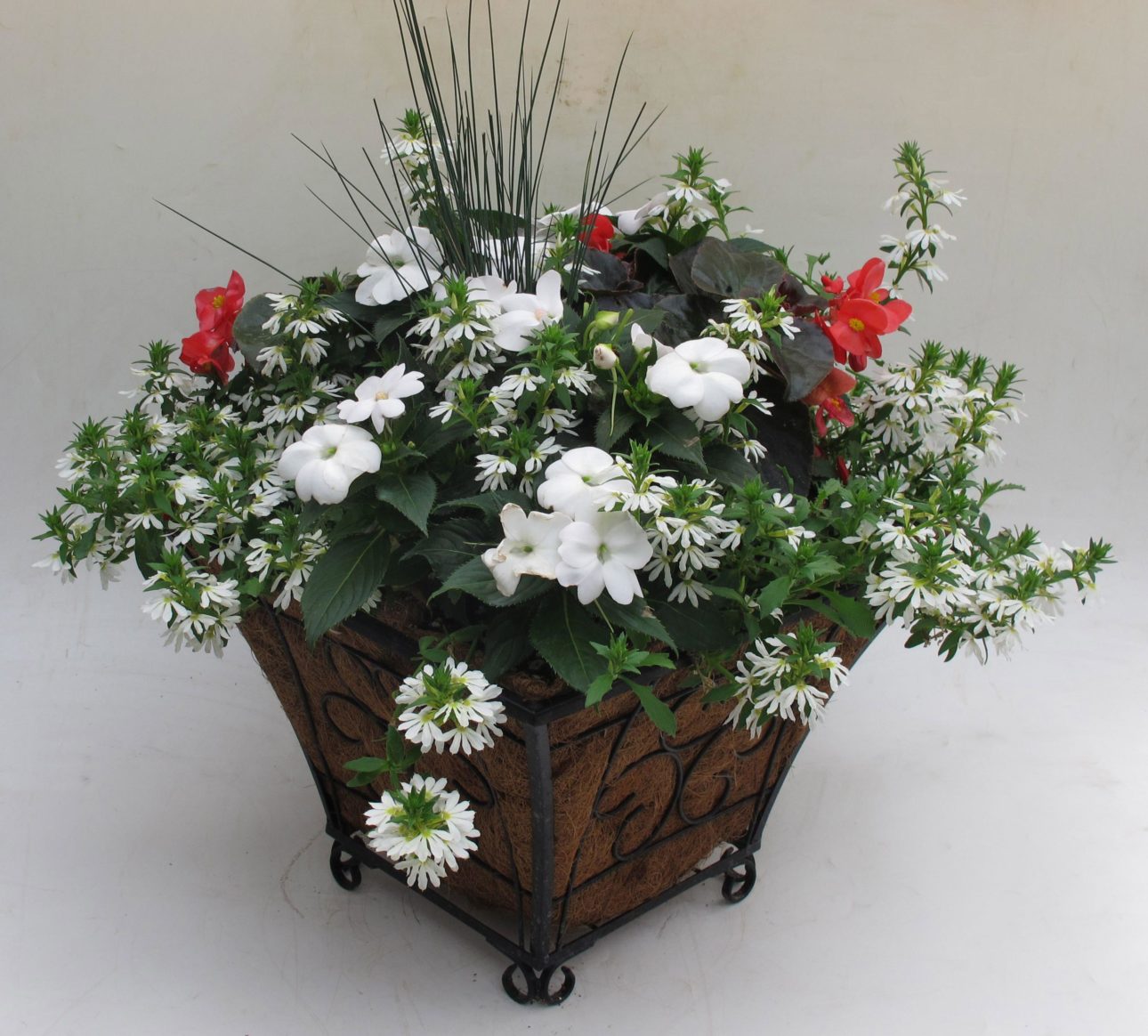Swiss Chard is a cool weather ornamental and edible crop planted in early spring or late summer. Mulching will help retain the necessary moisture for this plant to thrive. Fertilizer: When planted in the fall and used as an ornamental, it will not need any additional fertilizer. Hardiness: Not hardy in Michigan Water: Semi-dry to Moist Soil: Plants prefer a nitrogen rich soil with plenty of organic matter. Sandy loam to clay loam. Pests: Slugs and Snails – Begin watching …
Flowering Cabbage & Kale (Brassica) – Fall Care
Cabbage and Kale are ornamental as well as edible cool weather crops. As the temperatures begin to drop these plants start showing their beautiful colors. Treat like any transplant. Gently tease the roots apart if the plant is pot bound. Fertilizer: When planted in the fall and used as an ornamental no additional fertilizer is needed. Light: Part Sun to Full Sun Bloom-time: Early summer until fall Hardiness Zone: 2 to 10 – Not Hardy when grown in a container… …
Top Picks for Creating a Deer Resistant Garden
Top Picks for creating a Deer Resistant Garden Annuals Perennials Ageratum Artemesia Alyssum – annual & perennial Cranesbill geranium – Geranium sanquineum Begonia Coral Bells – Heuchera Coleus Coreopsis Marigold Dicentra – Bleeding Heart Monarda Helleborus – Hellebore (Lenten Rose) Rudbeckia (Black Eyed Susan) Hibiscus – annual, perennial & tropical Salvia – annual & perennial Nepeta – Catmint Dusty Miller Sage – Salvia Zinnia Spiderwort – Tradescantia Bulbs/Rhizomes Shrubs/Trees Allium Barberry Daffodil Japanese Maple Iris Hibiscus – a.k.a. Rose-of-Sharon …
Quick Picks for a Deer Resistant Garden
Many gardeners have problems with Deer and other vegetarian wildlife. There aren’t any plants that are truly Deer proof. Fortunately, there are varieties that are less favorable or what we refer to as resistant. Any plant with an offensive aroma will irritate their sense of smell. They also tend to avoid plants that are fuzzy, prickly or bitter. Below are some of the best options to try. Annuals: Ageratum, Alyssum, Dusty Miller, Marigolds, Mints, Sage, Salvia (including perennials), Verbena and …
Deer Resistant Vegetable and Herbs
Many gardeners have problems with Deer and other vegetarian wildlife. There aren’t any plants that are truly Deer proof. Fortunately, there are varieties that are less favorable or what we refer to as resistant. Any plant with an offensive aroma will irritate their sense of smell. They also tend to avoid plants that are fuzzy, prickly or bitter. Below are some of the best options to try. Highly Deer- Resistant Moderately Deer-Resistant Asparagus Beets Carrots Bok Choy Cucumbers …
Creating Beautiful Container Gardens
You don’t need a yard to have a garden. Container gardening offers a myriad of planting possibilities for the patio, deck, balcony, window box, rooftop…you name it! Most plants will work well in container gardens so the plant choices are wide open. Follow the tips below and enjoy. Container – A good rule is that larger is better. A large container will hold more soil so it won’t dry out as fast. A heavy container may be necessary to keep …
Container Garden Design Basics
Three ingredients are all it takes to plant one gorgeous pot after another – it’s as easy as one, two, three. One: Thriller The first ingredient is an attention-grabbing plant, also called a thriller. This plant takes center stage in a container, serving as the star of the design production. All other plants relate to this player in some way. Usually the thriller plant features an in-your-face shape with a strong upright growth habit. Thrillers typically unleash flower power by …
Go Green!!! Recipe for Cultivating Compost
Looking for an easy, inexpensive and ecological way to grow the best garden ever? Turn kitchen scraps and garden waste into black gold. Compost is a nutrient-rich soil-like material that helps the environment as it helps plants. When used as mulch compost will improve the soil, deter disease, prevent weeds, conserve water, and fertilize plants. Compost happens when the right ratio of nitrogen and carbon-rich organic waste is mixed with soil, water, and air. How it gets from garbage to …
Phalaenopsis Orchid
Orchids have a magical beauty and allure, with incredible colors, shapes and scents. With over 30,000 species of orchids available, it is important to know what kind of orchid you have. We are offering the Phalaenopsis Orchid. These plants are commonly referred to as “Moth Orchids” and are considered among the easiest of the orchid family to care for. Here are a few basic tips help your Phalaenopsis grow, thrive, and bloom: Temperature is important. Phalaenopsis enjoy a fairly warm climate. The …
Cyclamen
Cyclamen plants make excellent long blooming houseplants with minimal care. The key to keeping cyclamen happy and healthy is to replicate their natural environment as closely as possible. They should last a month or more in your home if you follow these tips…. Cyclamen need bright, indirect light and cool temperatures. Aim for day temperatures less than 68°F and night temperatures between 50° and 65°F. A good location is in a bright, north-facing window. Water the edges of the pot …



